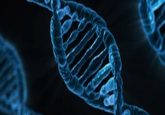A peek behind the paper – Marco Marra on the new protocol for isolating cell-free circulating tumor DNA from peripheral blood

Take a look behind the scenes of a recent report article published in BioTechniques entitled: ‘A high-throughput protocol for isolating cell-free circulating tumor DNA from peripheral blood’, as we ask lead author, Marco Marra (University of British Columbia, BC, Canada) about his new method to purify cfDNA directly from peripheral blood.
The advent of next–generation sequencing (NGS) has enabled researchers to develop assays for diagnosing and managing a variety of diseases including cancer. Liquid biopsies are one such technique that can assay for circulating cell-free tumor DNA (ctDNA). It is noninvasive and can help clinicians in assessing disease progression and monitor treatment response. cfDNA purification from peripheral blood (PB) requires centrifugation to separate plasma from whole blood. The authors developed a method to purify cfDNA directly from PB using magnetic beads by modifying binding and lysis conditions. Interestingly, this method includes a purification step to remove heme and other contaminants known to inhibit PCR amplification.
Marco Marra, OBC, PhD, FRS(C), FCAHS, is Director of Canada’s Michael Smith Genome Sciences Centre at the BC Cancer Agency; Professor and Head of the Department of Medical Genetics at UBC and the BC Node Leader for the Terry Fox Research Institute (all BC, Canada). He uses genome science to study cancers.
His recognitions include member of the Order of British Columbia, the 2017 Canadian Cancer Research Alliance’s Outstanding Achievement in Cancer Research Award, the 2015 Dr. Chew Wei Memorial Prize in Cancer Research and Fellow of the Royal Society of Canada. Marra has received honorary degrees from Simon Fraser University and from the University of Calgary.
Marra has spent much of his career working within and leading interdisciplinary teams seeking to study fundamental problems in cancer genome biology. His current research activities revolve around the interplay between the cancer genome and the epigenome, with particular focus on the evolution of treatment resistant cancers.
Can you give us a short summary of the recent report article, ‘A high-throughput protocol for isolating cell-free circulating tumor DNA from peripheral blood’?
Most commonly used protocols for the isolation of cfDNA require two major steps: plasma separation by centrifugation followed by cfDNA isolation via a silica column. The centrifugation step is not only a labor–intensive low throughput process, but is also prone to sample contamination and sample swaps. We have developed a magnetic bead-based method allowing direct cfDNA purification from whole blood, that has been automated on a liquid handling robot. The protocol has the flexibility of starting from either blood or plasma.
What led you to decide to carry out this research?
cfDNA-based liquid biopsy NGS tests have become increasingly important in cancer research and clinical sequencing. As a large genome center, we foresee the need for rapid and high-throughput purification of cfDNA to meet the demand for population scale genomics research and clinical diagnostics. We decided to develop a simple and fully automatable workflow.
What were the key conclusions; what impact do you foresee this research having?
cfDNA was successfully isolated directly from whole blood using our protocol and the sequencing results were comparable to that of the commonly used column–based method. Our method will improve the ease and speed of processing cfDNA samples for large sample numbers. This method could reduce the turnaround time and cost of cfDNA isolation while increasing the throughput.
What work are you hoping to do next in this area?
We plan to apply this technique to cfDNA sequencing projects including monitoring mutations of circulating tumor DNA and performing non-invasive prenatal screening.
You can read the full article on the journal website here: A high-throughput protocol for isolating cell-free circulating tumor DNA from peripheral blood





